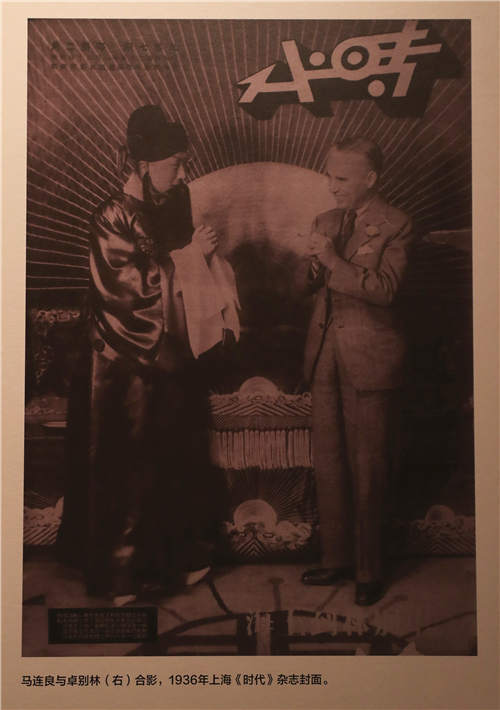

During the War of Resistance Against Japanese Aggression (1931-45), Ma Lianliang kept performing this show to urge Chinese people to be brave.
Ma Lianliang was an inclusive person with an international horizon, and the exhibition curator Zhang recommends several exhibits to prove that.
For example, the English letters "MLC" are woven onto a curtain, which is used onstage. It stands for the name of his troupe, Ma Lianliang Club.
"Not every Peking Opera performer at that time had such consciousness to promote the art form from a global perspective," Zhang says.
As some exhibited old photos show, Ma Lianliang once operated a cinema in Beijing's Xidan area, which was still new for the Chinese public in the 1930s. He also opened a vinyl recording studio for Peking Opera performers-the first privately run recording studio in China.
A 1936 photo of Ma Lianliang and Charlie Chaplin in Shanghai also reveals an unexpected intercultural connection between the two master performers.
"The exhibition reminds us to remember those who have devoted themselves to fine traditional Chinese culture," says Pu Cunxin, a veteran actor and head of the China Theater Association.
"Why is Peking Opera hailed as the quintessence of Chinese culture? Mr Ma's story shows how it rose to that status, rooted in this city."
Pu says that the ongoing exhibition also helps to introduce Peking Opera to the youth.